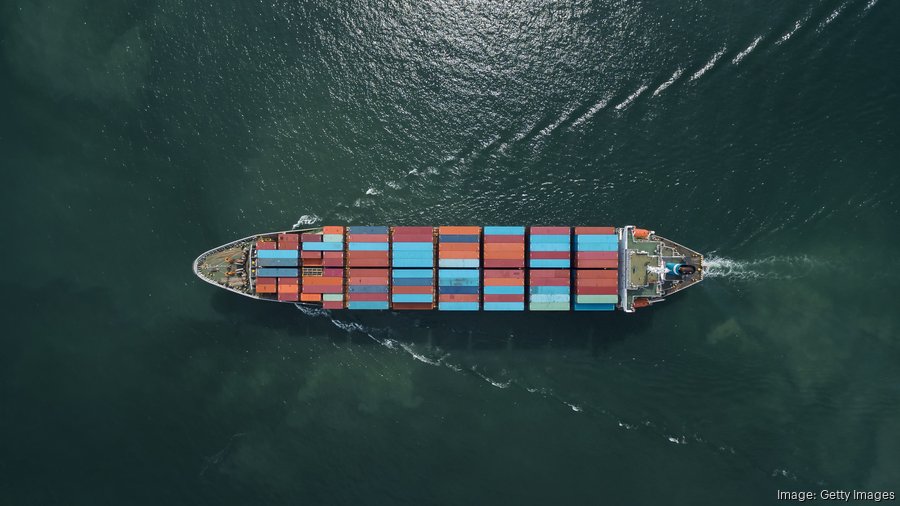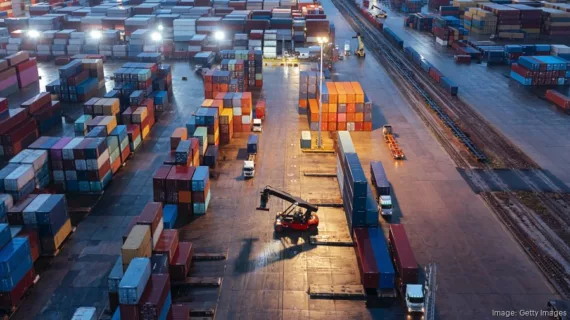Newsroom
For Immediate Release

Q & A: How the Red Sea Crisis is Disrupting the Supply Chain
By Chad South – Chief Operating Officer, Dynamic Logistix
The Red Sea crisis has garnered significant attention in recent months as a result of the challenges it has placed on the global supply chain. The Red Sea, which provides access to the southern entrance to the Suez Canal, is one of the most important and densely packed shipping channels in the world. Roughly 19,000 vessels travel between the Indian Ocean and Mediterranean Sea each year and the Suez Canal reduces shipping distance between Asia and Europe by nearly half. About 12% of global trade, opens new tab passes through the Red Sea, including 30% of global container traffic and $1 trillion worth of goods each year, reported by Reuters.
It has become a focal point of concern due to escalating tensions and conflicts in the region with its roots in geopolitical rivalries, regional conflicts, and maritime security concerns. The ongoing conflict in Yemen, the presence of armed groups in the region, and the strategic importance of the Bab el-Mandeb Strait and the Suez Canal—all contribute to the heightened tensions.
Q: What is the impact of shipments rerouting due to the conflict?
The threat to maritime security has proven to be a leading threat as the risk of piracy, armed conflict, and attacks on commercial vessels has made shipping through the Red Sea more perilous. This has forced shipping companies to reassess their routes and security measures, leading to delays and increased costs.
According to Aljazeera, rerouting vessels around the Cape of Good Hope as opposed to going through the Red Sea and Suez Canal can add up to two weeks to a shipment’s journey and between 3,000 and 6,000 nautical miles (between 3,452 and 6,904 miles).
And the London Stock Exchanges Group’s (LSEG) oil and shipping research team calculated that it costs 35 percent more and takes an additional eight days for a large container vessel to travel from Shanghai, China to Rotterdam, Netherlands via the Cape of Good Hope, compared to the Red Sea route.
Q: Explain how this has caused shipping prices to increase.
In addition to the increased cost of route diversification, the uncertainty surrounding the situation in the Red Sea has led to insurance and risk assessment challenges for shippers. Insurers charge higher premiums to provide coverage for the increased risks of piracy, cargo theft, and damage to vessels, contributing to an overall increase in prices.
The threat of piracy, armed conflict, and attacks on commercial ships has necessitated additional security measures, such as onboard security personnel and enhanced surveillance systems. These security measures incur additional costs for shipping companies, which are ultimately passed on to customers through higher shipping prices.
Operational disruptions like delays in cargo loading and unloading, route deviations, and port closures can cause an increase in fuel consumption, idle time for vessels, and additional handling charges, all of which add to the cost of shipping.
Finally, CNBC has collected data showing that the longer transit around the Cape of Good Hope as ships divert from the Red Sea is already having a significant impact on vessels available to pick up containers at ports. Because the number of vessels has been reduced throughout the crisis, adding vessels to the flow of trade could help with a potential container crunch that has many logistics managers worried. Late vessels cause a chain reaction; when they’re late, the containers are then late to be processed and turned around again for reuse, delaying exports from Europe to the United States and from Asia to the United States and the world.
Q: What can shippers do to mitigate the risks and increased costs?
Shippers can expect costs to remain elevated for some time. “The longer the duration of these disruptions, the more likely shipping rates will stay elevated — if not increase further,” Nora Szentivanyi, Senior Economist at J.P. Morgan noted. “The one potential silver lining is that there remains an excess supply of container ships globally, and many that were ordered during the pandemic continue to enter service. Thus, it appears likely that once the disruptions are over, shipping rates could lower fairly quickly.”
One of the key recommendations is for shippers to diversify their routes and explore alternative transportation options. By avoiding high-risk areas and utilizing alternative routes, shippers can reduce their exposure to potential disruptions.
In addition to route diversification and collaboration, experts also advise shippers to invest in advanced technology and security measures to safeguard their cargo and vessels. This includes the use of satellite tracking systems, onboard security personnel, and secure communication channels to monitor and protect shipments during transit.
The Red Sea conflict represents a significant challenge for the global supply chain, with implications for maritime security, insurance, and logistics operations. However, by leveraging technology, collaboration, and risk management best practices, shippers can keep the supply chain moving forward. As the situation continues to evolve, stakeholders need to remain vigilant and proactive in addressing the risks.
Has the Red Sea Conflict impacted your shipping operations? We’re interested to hear how U.S. shippers have modified their shipping strategies; leave a comment below and tell us your story.
Dynamic Logistix is a third-party provider of shipping and freight solutions that combines a world-class technology platform with stellar personal service. Clients save time and money by providing superior visibility, transparent processes, and comprehensive real-time reporting through our transportation management software. For more information, please visit our website.
Chad South is the Chief Operating Officer at Dynamic Logistix.

3 Keys to an integrated, efficient, and reliable refrigerated shipping network
Refrigerated shipping, or reefer shipping, is a sophisticated network of technology, infrastructure, and expertise dedicated to preserving the quality and safety of temperature-sensitive cargo. The transportation of goods in specially designed containers or cargo holds equipped with temperature-control mechanisms. These systems maintain specific temperature ranges, typically between -20°C to +30°C (-4°F to 86°F), depending on the cargo’s requirements.

End-to-end visibility changes the game for shippers, carriers
Companies across the supply chain have been laser-focused on improving their visibility options over the past several years. While most companies understand that visibility paves the way for increased efficiency and better coordination throughout the lifecycle of a shipment, many leaders in the space do not yet have a solid understanding of partial versus complete visibility.

Update on the State of Freight: April 2024
Insight into technology and labor trends, current rates and a new tax plan.

April 2024 Logistix Loop
From fragile ceramic mugs to heavy weight machinery, product shipments come in various shapes, sizes and weights. While not all freight requires the same handling for safe delivery, there are a few best practices shippers can implement to set up carriers for success when transporting their goods.

March 2024 Logistix Loop
Stay ahead of the competition with Logistix Loop, our new monthly series that informs you of the latest news and trends impacting the transportation and logistics industry. Navigate the intricate web of supply chains and transportation networks with Dynamic Logistix as your guide for applying new technology and positioning your business for success.




